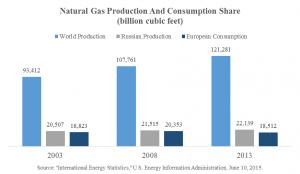Trains are among the safest form of transportation but on rare occasions when crashes occur, the death toll is often high. The crash earlier this week of a Northeast Regional train en route from Washington D.C. to New York City has brought Positive Train Control (PTC) back into the news.
First mandated in the resultant Railroad Safety Improvement Act of 2008 (RSIA 2008) as a result of a tragic train crash in California in 2008 that killed 25 people, PTC remains an expensive, unnecessary government mandate. Cheaper technology that is just as effective is a better way to increase safety. Legislators cannot let the emotion of the moment sway them into adding unnecessary mandates or spending more taxpayer funds on passenger rail.
Railroads are one of the safest forms of transportation. The National Safety Council compared four modes of transport: airlines, passenger trains, buses, and light duty vehicles (includes passenger cars, light trucks, vans, and sports utility vehicles). In 2009 the passenger death rate in light duty vehicles was 0.53 per 100 million passenger-miles. The bus fatality rate was 0.04; the rate for trains is 0.02. Only airlines were safer at 0.01.
In the California train crash, a Metrolink commuter train collided with a Union Pacific freight locomotive killing 25 people. The crash was the worst U.S. train accident in 15 years. Federal investigators revealed that the train driver was sending and receiving text messages just before his commute train skipped a red light and hit the freight locomotive. Even before the final safety report was released, Sen. Dianne Feinstein (D-Calif.) began pushing to mandate automated safety equipment for all large railway systems. According to Feinstein the accident occurred because of “resistance in the railroad community.” Kitty Higgins of the National Transportation Safety Board (NTSB) also began lobbying for positive train control less than 24 hours after the collision and before the full safety investigation began. Swept up in the emotion, Congress in 2008 failed to seriously consider any solution except PTC. The PTC bill passed October 16, 2008 with limited debate only a month after the crash.
Positive train control is one of several methods to improve railroad safety. While PTC can prevent accidents by using GPS, sensors, and other technology to stop trains remotely, the costs are astronomical. The Federal Railroad Administration (FRA) places the cost at more than $13 billion to install and maintain a nationwide class I PTC system. Consulting firm Oliver Wyden estimated that PTC has a 20 year benefit of $0-$400 million. Even if all $400 million in benefits are realized, the cost/benefit ratio range is $1 in benefits for every $20 spent on the system.
Although Congress failed to consider an alternative, there are several technologies that could prevent the most serious train crashes. The most obvious solution would be to expand Amtrak’s existing automatic train control system that regulates speed. Automatic train control systems can be programmed to send information to a train about the speed limit for a section of track. Equipment inside the locomotive senses when a train is exceeding the limit and sets off an alarm. If the engineer fails to slow the train, the system triggers the train’s emergency brakes. Amtrak installed this technology on the southbound track but not the northbound track, because among other trains it slows trains too much. If the technology was installed on the northbound track, the train likely would have gone around the curve at 80 miles per hour and not come off the track.
Other options include rerouting freight trains, reducing the speeds of trains to minimize the impact of collisions or implementing schedule changes to increase headways between trains. These solutions can be implemented with no direct costs and only the indirect time costs of slower trains and longer commutes.
There are several other PTC complications that leaders have not taken into account. Immediate implementation of PTC could impair safety. PTC is forecast to prevent only 4 percent of railway accidents and the $13 billion spent enacting the technology is money that cannot be spent on infrastructure upgrades and other safety improvements. Further, despite claims to the contrary PTC by itself will not improve track efficiency. Increasing the train frequency requires precision dispatching. While precision dispatching can be implemented, it is a separate technology and different issue than positive train control. Additionally, Current PTC systems will make train tracks less efficient. Today’s systems do not estimate braking times accurately. As a result, these systems slow a train prematurely when compared with human control, reducing the number of trains that can fit on a section of track.
The Federal Railroad Administration (FRA) has studied PTC repeatedly. In 2005 the agency noted that a regulatory mandate for PTC system implementation [can] not be justified based on cost-benefit principals and direct safety benefits.
Why despite FRA’s advice is positive train control mandatory? Advocates who had been pushing for the technology for 20 years saw an opening. At the same time, many members of the House and Senate were swept up in the emotion of the situation and failed to consider the cost/benefit ratio or alternative technologies.
Fortunately, Congress has a chance to learn from its mistake. No action should be taken until a preliminary investigation is completed. FRA should study other technologies including Amtrak’s existing automatic train control to determine if there is a long-term solution that is just as effective at a more reasonable price. Safety policy is too important to be decided in the emotional aftermath of a tragic accident.
